Doric, Ionic, Corinthian
|
-
About this Collection
The column is one component of an architectural system called the Classical Orders of Architecture.
The column rests on a base, has a shaft that may or may not be fluted (vertical grooves), and is topped by a capital. The horizontal portion of a building that the columns support, called the architrave, is also designed according to the rules of each order.
The ancient Greeks developed the first three orders or styles of columns, Doric, Ionic, and Corinthian. Each has its own distinctive style, structure, proportion, and ornamentation.
The Doric Order is the oldest and plainest. It is the only order that uses no base for the column. The shaft is usually fluted, and the capital is a simple cushion. The Doric architrave features alternating triglyphs (a set of three vertical brands) and metopes (a carved panel).
The Ionic Order is taller and more slender than the Doric. Its capitals are in the form of volutes (scroll shapes), and its architrave is usually a continuous frieze.
The Corinthian Order is the tallest and most elaborate of the three, featuring a bell-shaped capital from which leaves emerge.
The Romans favored the Corinthian order for its richness, but also developed two distinct orders of their own, the Tuscan and the Composite.
The Tuscan Order is the simplest of all, using no fluting, a flat cushion capital, and no ornamentation in the architrave. The Composite Order, on the other hand, is the most ornate and flexible of all. Its capital combines the leaves of the Corinthian with the volutes of the Ionic.
The Pantheon is an example of the Romans’ use of the Corinthian, while Doric is used on the Parthenon in Athens.
-
Alberti's explication of the Ionic order
This page from the 1550 Steedman copy of Alberti illustrates in precise detail the forms and proportions of the Ionic order of columns. Handwritten notes from a later time can be seen.
-
Column bases of the Composite order, as pictured in Serlio's Fourth Book of Architecture
Illustration of the forms for column bases using the Composite order from Sebastiano Serlio's Book Four, which set down definitive design rules for architects.
Though not specifically named and discussed by Vitruvius, Renaissance architects discovered that this style had been used in ancient buildings, so they accepted it as a legitimate order.
Image from the Steedman's French edition of this landmark publication, printed in Antwerp in 1545.
-
Column of Trajan in Rome as depicted by Fischer von Erlach
Book Two of Johann Bernhard Fischer von Erlach's Entwurff einer historischen Architecture... (Historic Architecture) of 1721 sought to document 'lesser known' ancient Roman buildings.
This is Trajan's Column and its surrounding piazza, which would later be meticulously illustrated by Piranesi. Each element in the piazza is labeled using a letter, and is described in the text portion of the book.
-
Column of Trajan in Rome as it appeared in 1791
The Column of Trajan as it appeared in 1791.
This image is from a lovely compendium of delicately tinted aquatints produced by J. Merigot in 1791. Entitled The Ruins of Rome, it depicts ancient Roman structures as seen by travelers on the Grand Tour.
-
Detail of the capital of Trajan's Column, showing the Dacians defeated by Rome
In the 1770s, Giovanni Battista Piranesi produced folio documentation volumes of the ancient Roman columns that commemorated the exploits of emperors Trajan and Marcus Aurelius.
This image is a detail of the capital of the Column of Trajan. The column depicts the Dacians leaving their country after their defeat by the Romans. Note the text descriptions at either side of the column.
-
First definitive depiction of architectural orders to appear in print, from Serlio's Fourth Book
This illustration is considered to be the first definitive, coherent depiction of the five classical orders of architecture to appear in print.
For centuries to come, architects would study, follow, embellish and discuss these orders.
Illustration from Sebastiano Serlio's Fourth Book of Architecture, which laid out definitive rules of design for architects. The Steedman copy of this landmark publication is the first French edition, published in Antwerp in 1545.
-
Piranesi's exquisitely detailed documentation of two Roman column bases
Exquisitely detailed documentation of two ancient Roman column bases, from Giovanni Battista Piranesi's Della magnificenza ed architettura de' romani of 1761.
This sumptuous volume was Piranesi's major contribution to the scholarly debate that was then raging on which architectural legacy was the more pure and noble, Roman or Greek. Piranesi was a prominent advocate of Roman superiority.
-
Picturesque ruins of the Temple of Castor & Pollux in the Roman Forum
These three columns in the Roman Forum are identified today as being remains of the Temple of Castor and Pollux.
This image is from a lovely compendium of delicately tinted aquatints produced by J. Merigot in 1791. Entitled The Ruins of Rome, it depicts ancient Roman structures as seen by travelers on the Grand Tour.
-
The Doric order described and illustrated by Palladio
Book One of Andrea Palladio's I quattri libri dell'architettura (The Four Books of Architecture) is devoted to fundamental elements of architecture and building materials, and includes detailed descriptions and illustrations of the five orders of architecture. This page, from the Steedman's 1581 edition, illustrates the Doric style.
-
Detail of Piranesi's 10-foot foldout of Trajan's Column in Rome
In the 1770s, Giovanni Battista Piranesi produced enormous volumes documenting the ancient Roman columns that commemorated the exploits of emperors Trajan and Marcus Aurelius.
This image is a detail of the 10-foot foldout depiction of the Column of Trajan, showing the statue of the emperor himself. The huge foldout section was made by attaching six folio engravings together.
-
Column capitals in the Composite order, illustrated in Serlio's Fourth Book of Architecture
Illustration of the characteristics of the Composite order for column capitals from Sebastiano Serlio's Fourth Book of Architecture.
Though not specifically named and discussed by Vitruvius, Renaissance architects discovered that this style had been used in ancient buildings, so they accepted it as a proper order.
Image from the Steedman's French edition of this landmark publication, printed in Antwerp in 1545.
-
Facade of a classical temple from the 1522 edition of Vitruvius
This page illustrates some of the features of the small-sized octavo books that were becoming popular in the early 16th century. They were small enough to fit into a hand and printed in Italic typeface.
Illustration of a temple facade from the Steedman's 1522 octavo edition of Vitrivius' 'Ten Books of Architecture'.
This image of four columns holding up a pediment is more primitively rendered in this handbook edition than in the folio 1521 edition.
-
Picturesque ruins of the Temple of Castor & Pollux in the Roman Forum
These three columns in the Roman Forum are identified today as being remains of the Temple of Castor and Pollux.
This image is from a lovely compendium of delicately tinted aquatints produced by J. Merigot in 1791. Entitled The Ruins of Rome, it depicts ancient Roman structures as seen by travelers on the Grand Tour.
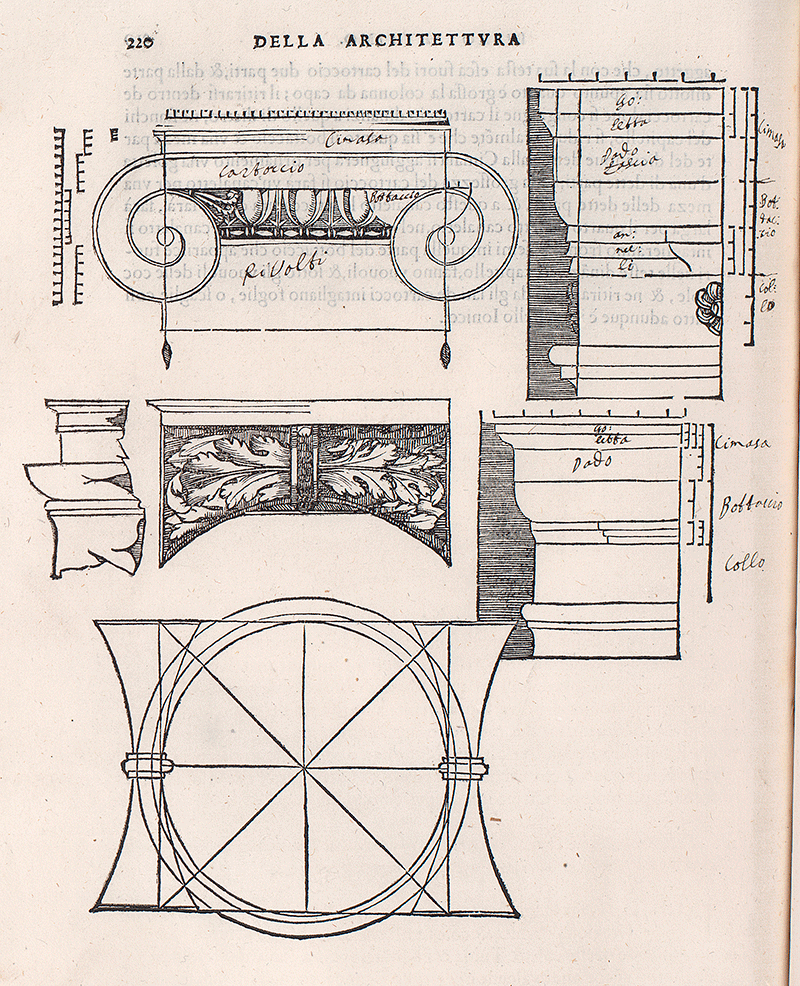 View Image
View Image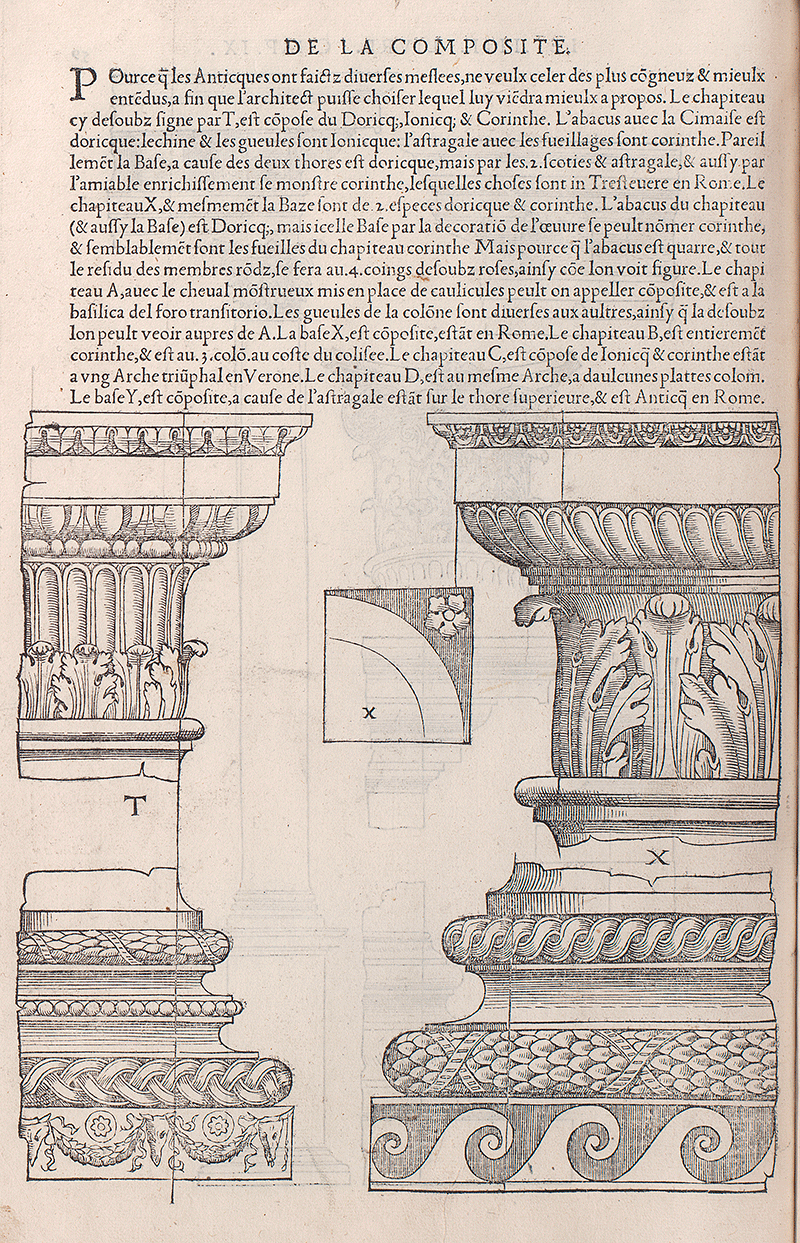 View Image
View Image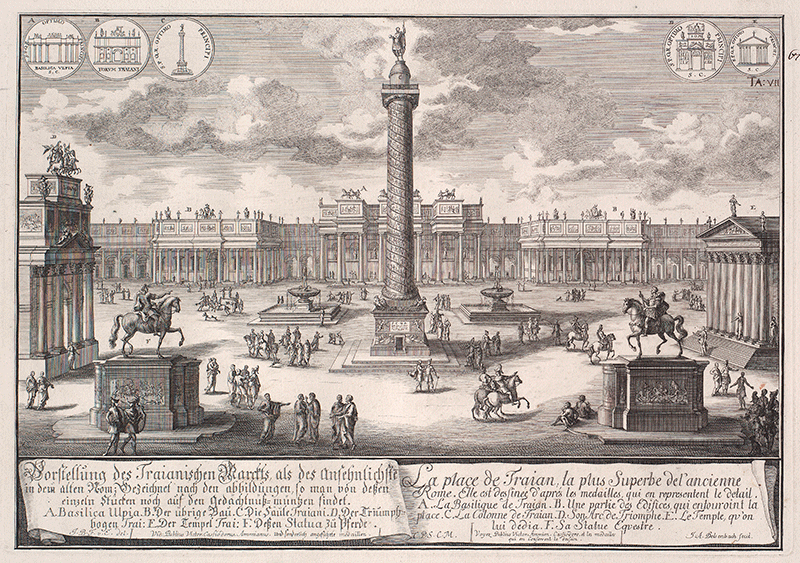 View Image
View Image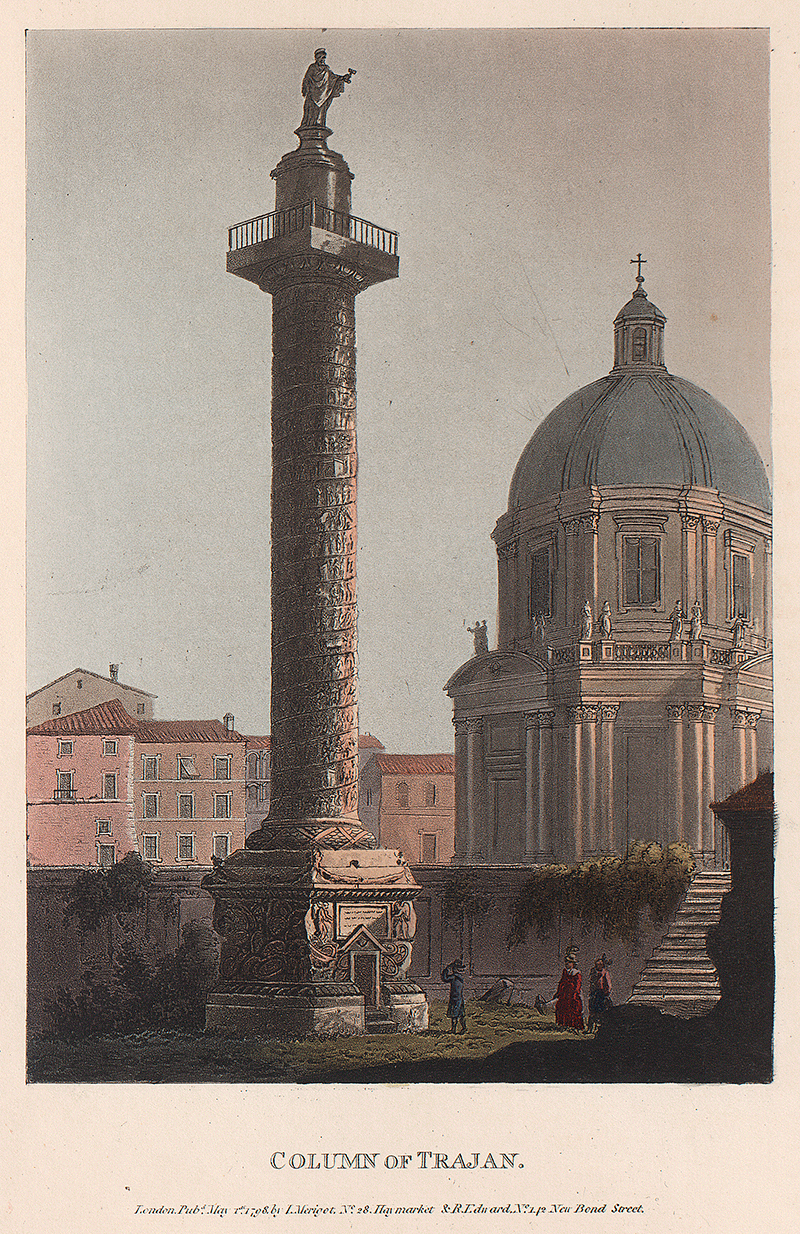 View Image
View Image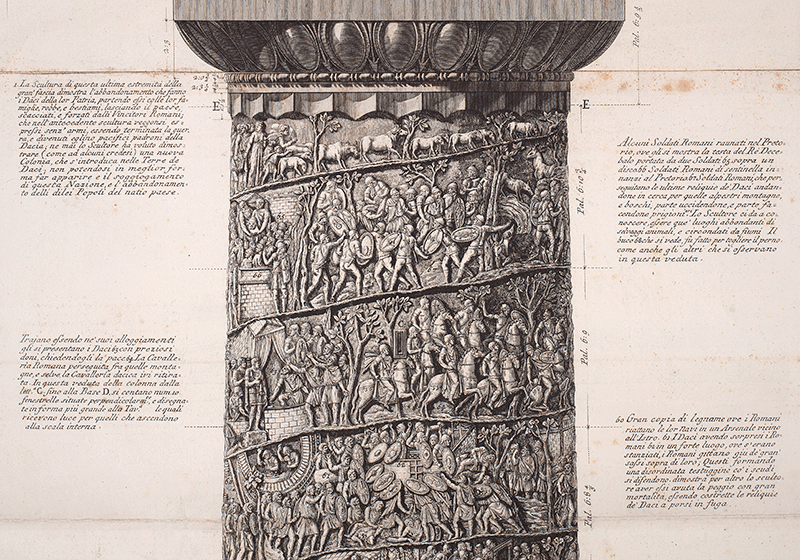 View Image
View Image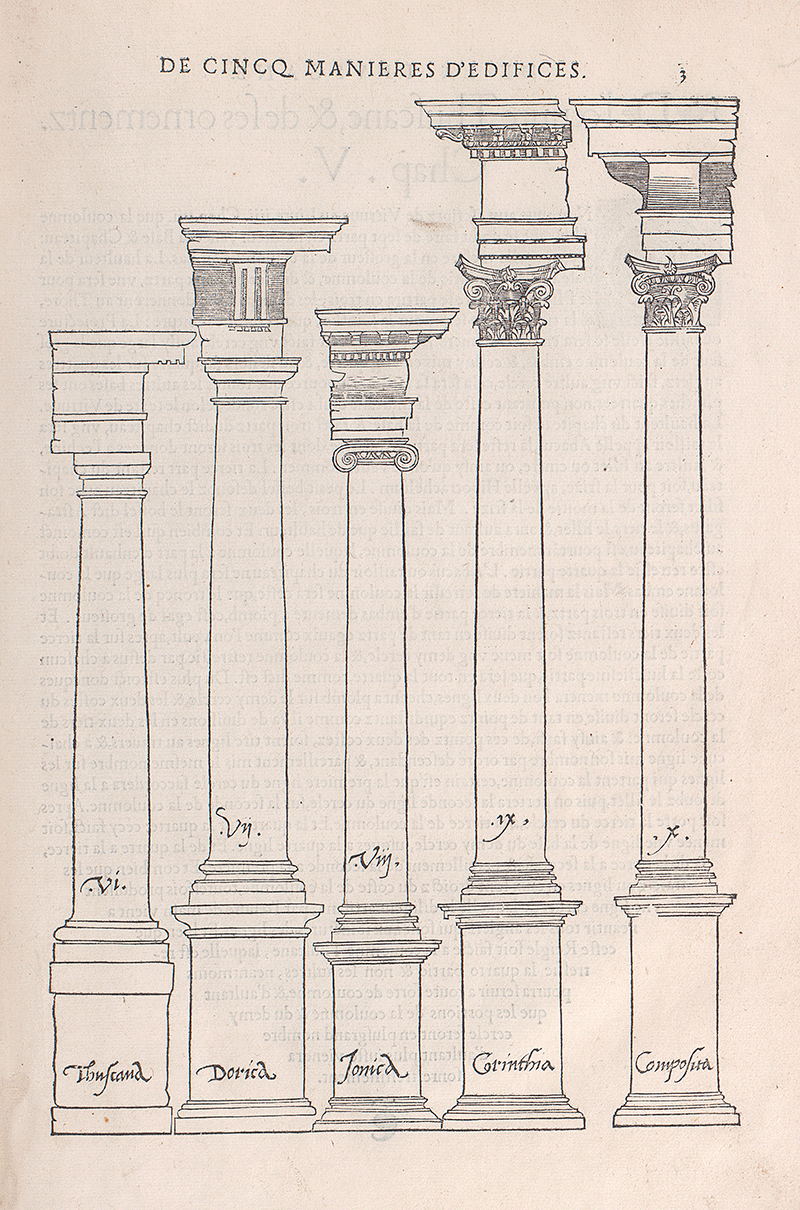 View Image
View Image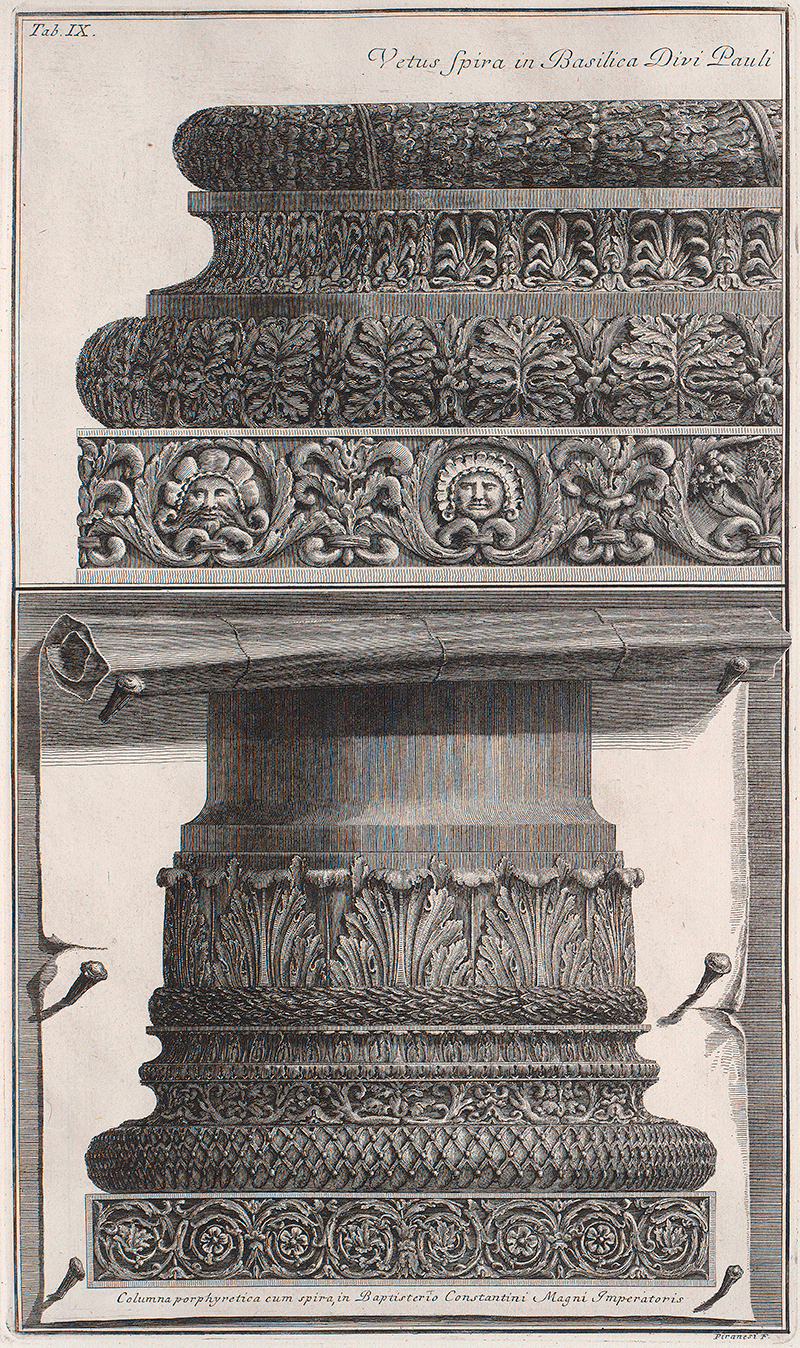 View Image
View Image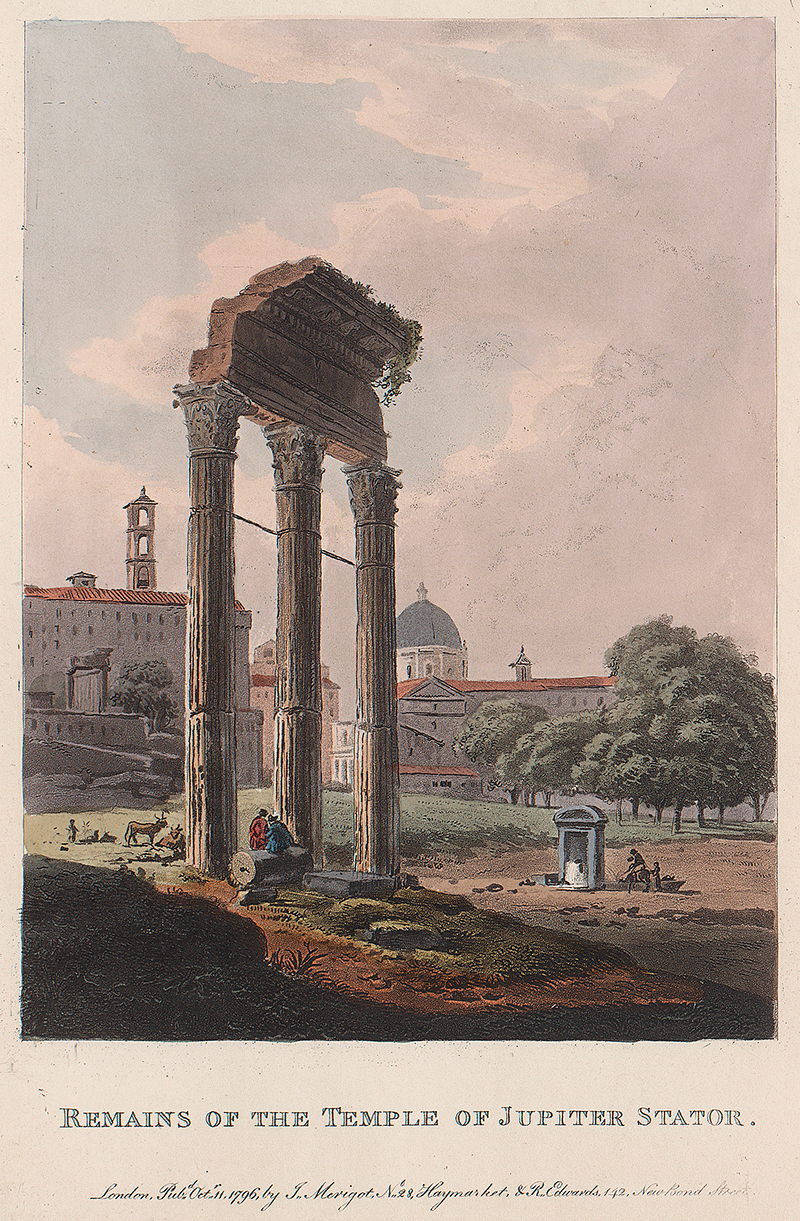 View Image
View Image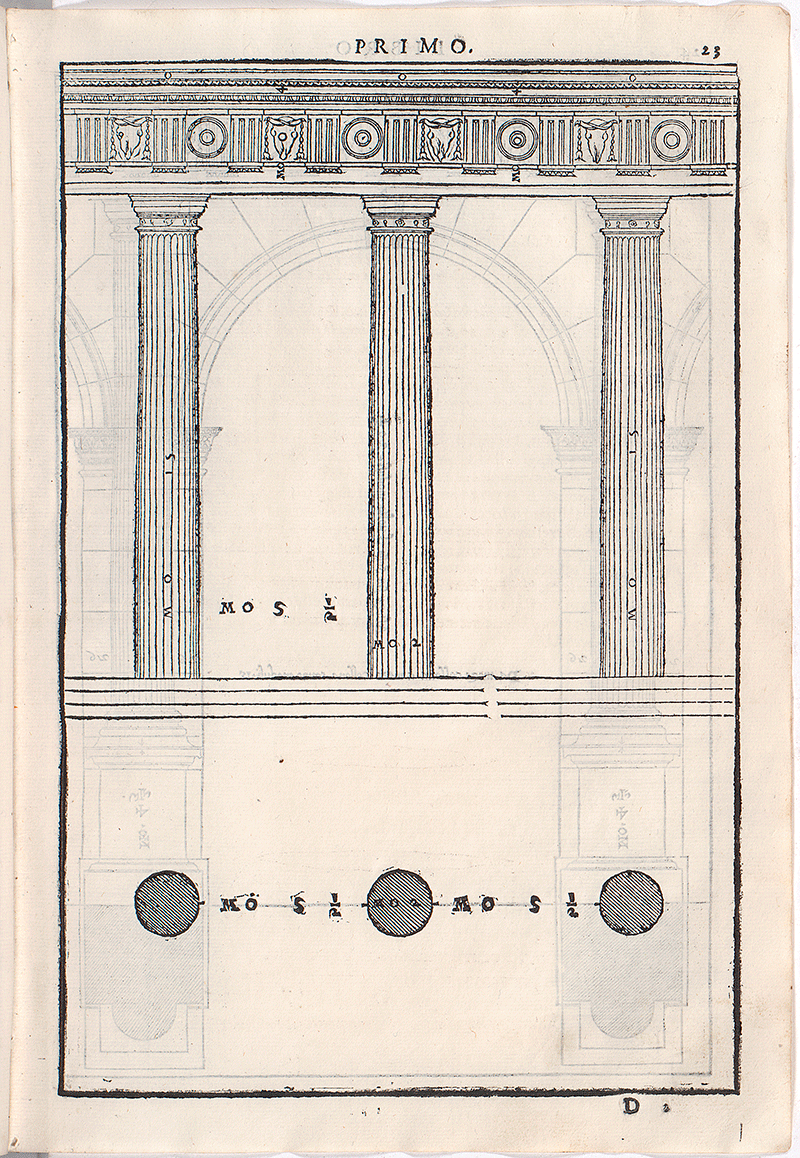 View Image
View Image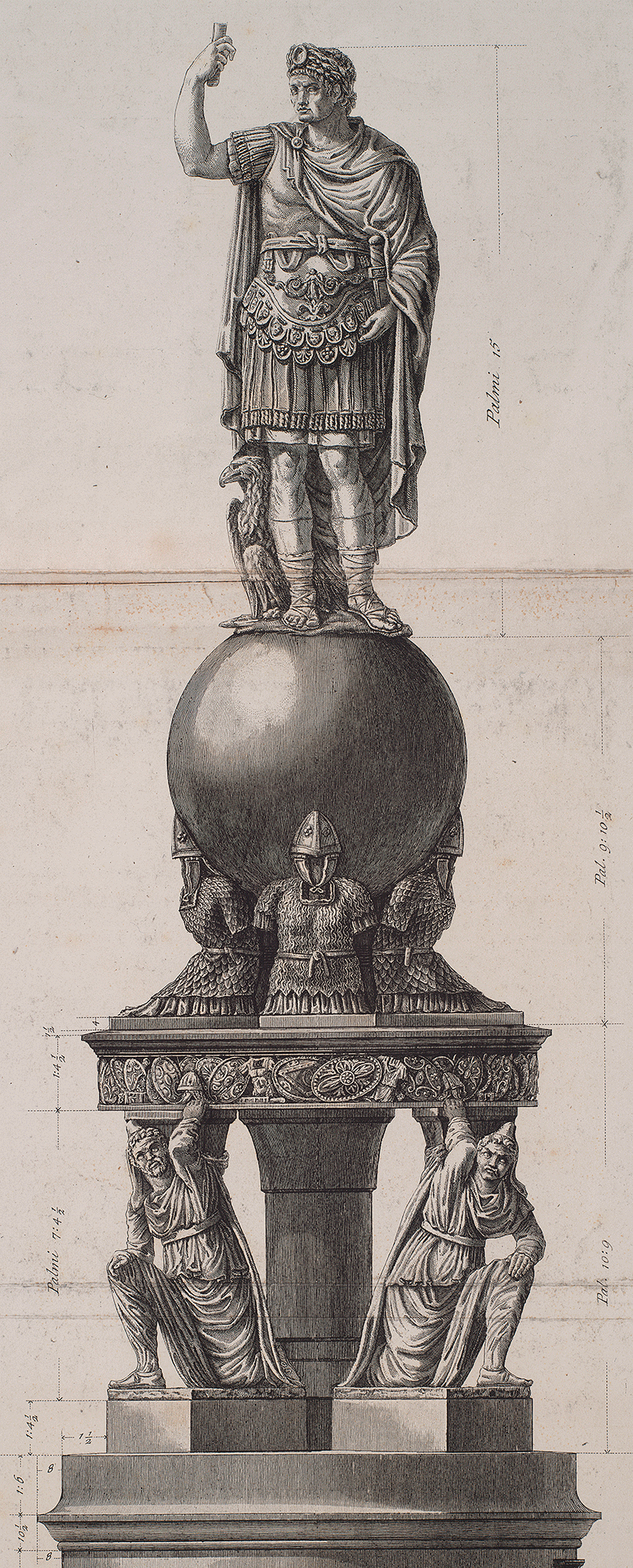 View Image
View Image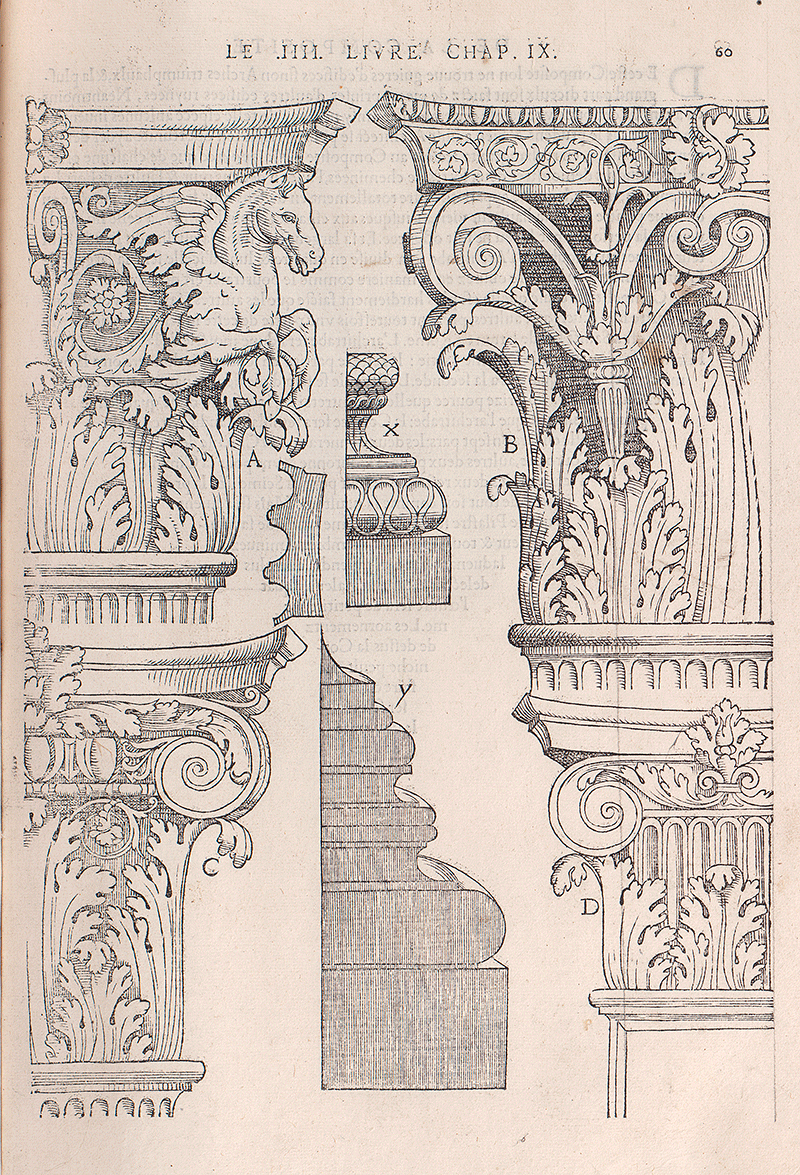 View Image
View Image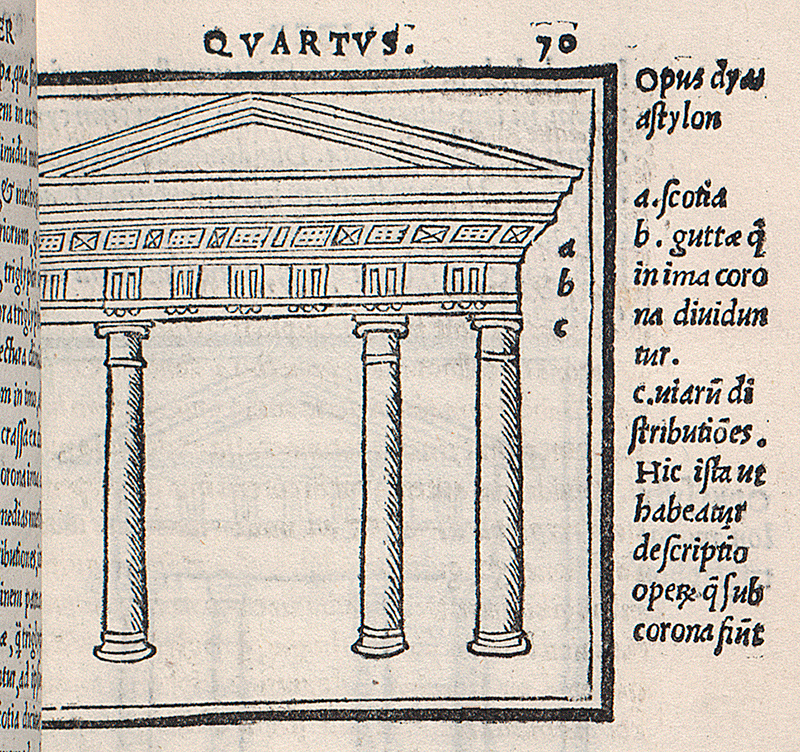 View Image
View Image